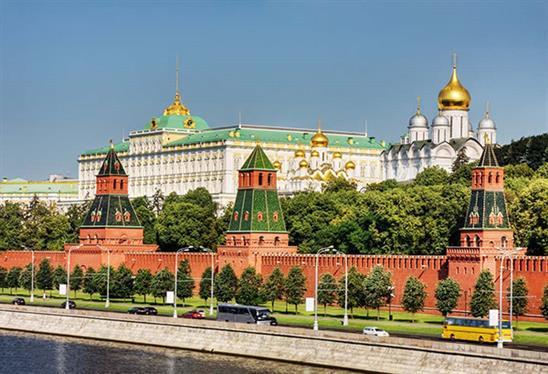From its humble beginnings as a small fortress, Tula has blossomed into a vibrant city steeped in history and brimming with modern dynamism. Ever wondered how much this Russian gem has changed throughout the centuries? Let’s embark on a journey through time to explore the fascinating evolution of Tula, from its foundational roots to the thriving metropolis it is today.
A Fortress Town to an Industrial Powerhouse: Tula’s Economic Metamorphosis
Tula’s early history is intertwined with its strategic importance as a defensive outpost. Originally a small fortress, it guarded the southern borders of the burgeoning Russian state. But how did this fortress town transform into a significant industrial center? The answer lies in the rich deposits of iron ore discovered in the surrounding region. This natural bounty fueled the development of metalworking and weaponry, establishing Tula as a crucial arms manufacturing hub. From crafting swords and armor in the early days to producing world-renowned firearms like the iconic Mosin-Nagant rifle, Tula’s industrial prowess has been instrumental in shaping its identity. This transition from a primarily agricultural and defensive settlement to a powerhouse of industry spurred significant changes in the city’s landscape and demographics. Think about the shift: a quiet fortress town becoming a bustling center of production. This economic evolution laid the foundation for Tula’s continued growth and modernization.
 Tula's Transformation From Fortress to Industrial City
Tula's Transformation From Fortress to Industrial City
The Rise of Tula’s Craftsmanship: From Weapons to Samovars and Gingerbread
While weaponry defined Tula’s industrial landscape, the city’s artisans also cultivated a reputation for exquisite craftsmanship in other domains. Tula samovars, intricately designed and gleaming with polished metal, became synonymous with Russian hospitality. These samovars, used for brewing tea, transformed from utilitarian objects into works of art, reflecting the city’s dedication to meticulous detail and aesthetic beauty. Furthermore, Tula gingerbread, a sweet treat with elaborately decorated icing, emerged as another symbol of the city’s artistic flair. Imagine the bustling workshops filled with the clang of metal and the sweet aroma of baking gingerbread! This diversification of craftsmanship broadened Tula’s economic base and further solidified its reputation as a center of skilled artisans.
From Ancient Walls to Modern Avenues: The Changing Face of Tula
The physical landscape of Tula has undergone a dramatic transformation since its founding. The original fortress walls, once essential for defense, have largely given way to modern avenues and expansive public spaces. The city’s architecture reflects a blend of historical influences and contemporary designs. While remnants of the past, such as the Tula Kremlin, stand as testaments to the city’s rich heritage, modern buildings and infrastructure have reshaped the urban environment. Can you picture the contrast between the ancient Kremlin walls and the sleek lines of modern structures? This juxtaposition of old and new gives Tula a unique character, showcasing its evolution across the centuries.
Preserving the Past: Tula’s Historical Legacy
Despite its modernization, Tula has made significant efforts to preserve its historical legacy. Museums, such as the Tula State Museum of Weapons and the Tula Regional Museum of Local Lore, chronicle the city’s rich past, from its military history to its artistic traditions. These institutions serve as repositories of knowledge, ensuring that future generations can connect with Tula’s heritage. Moreover, historical sites like the Yasnaya Polyana estate, the former home of renowned author Leo Tolstoy, offer glimpses into the lives and legacies of prominent figures associated with the region. What stories do these historical sites whisper to us about Tula’s past? They remind us of the city’s enduring significance in Russian history and culture.
Tula’s People: A Tapestry of Resilience and Innovation
The people of Tula have played a pivotal role in shaping the city’s trajectory. Known for their resilience and ingenuity, they have navigated through periods of war and peace, adapting to changing economic landscapes and embracing innovation. From the skilled metalworkers who forged weapons for the Tsar’s armies to the contemporary entrepreneurs driving the city’s modern economy, the people of Tula have consistently demonstrated a remarkable capacity for adaptation and progress. What defines the spirit of Tula’s residents? It’s their unwavering dedication to their city and their ability to blend tradition with innovation.
 Tula People Celebrating
Tula People Celebrating
Tula Today: A City Looking Towards the Future
Today, Tula is a dynamic city that embraces both its historical heritage and its future potential. While its industrial roots remain strong, the city has diversified its economy, fostering growth in sectors such as technology and tourism. Tula’s cultural scene is thriving, with numerous theaters, museums, and art galleries offering a rich tapestry of experiences. What does the future hold for Tula? It’s a city poised for continued growth, embracing innovation while cherishing its unique identity.
Conclusion: Tula’s Enduring Legacy
From a fortress safeguarding Russia’s southern borders to a thriving industrial and cultural hub, Tula’s transformation is a testament to its resilience and adaptability. The city’s rich history, its skilled artisans, and its dynamic population have all contributed to its enduring legacy. We encourage you to share your thoughts and reflections on Tula’s fascinating evolution. What aspects of its transformation resonate most with you? Leave a comment below and let us know! Perhaps you have a personal connection to Tula or are planning a visit? We’d love to hear your stories and perspectives. Don’t forget to explore other articles on our website to delve deeper into the captivating history and culture of Tula and the surrounding region.











